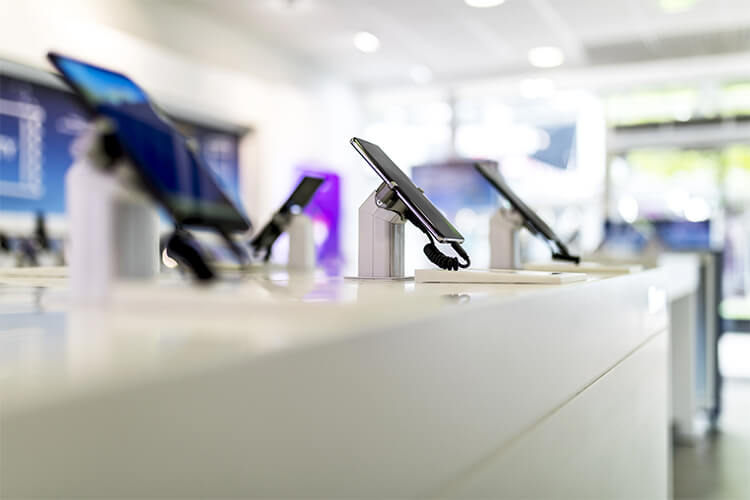Updated January 18, 2022
While everyone recognizes that the global pandemic drove many to work from home, the broad impact on mobile computing and communications is more far-reaching than many may surmise.
Clearly, nobody could be prepared for the sudden, tremendous shift in where and how people work that occurred in March 2020. When they began working from home many also shifted the device they work on to a mobile form-factor. As that shift continued, companies rushed to improve their policies, increase security, and adapt their computing and communications to accommodate the new, far more distributed model they found themselves in.
This resulted in several trends, some of which had been tried previously but didn’t gain traction perhaps due to a lack of urgency. Now, these had become urgent. As we move further along the path to recovery, here are some trends we expect to see continue:
1. Secure Enterprise Data with Updated BYOD Policies
Years ago, corporate IT departments began to realize some of their users were connecting into their network using un-approved, non-corporate devices. Rather than resist this, some worked to enable it and assure secure access protecting both the enterprise data and the user. “Bring Your Own Device” (BYOD) became a popular mobility trend that subsided in the news but continued in the workplace.
With so many more users on their own mobile devices, many companies took the time to further develop their mobility management policies around BYOD. Who would own the device? Who would pay for the service? Which would best align with established enterprise mobility management policies and expenses? What would be the security requirements? Network access standards?
Maintaining and enforcing enterprise BYOD policies should be far simpler going forward making it easier for users and their companies to enjoy greater choice.
2. Block Exploits with Multi-Layered Security
With most mobile users outside the firewall, security strategies had to be adapted. Acknowledging the difficulty in enforcing enterprise BYOD security requirements may put more emphasis on back-end security to block exploits well before they reach the mobile device. Multi-factor authentication (MFA) became far more the standard for account access.
Every time security technologies improve, exploits become more sophisticated, so the diligence required in the development and deployment of new security measures will continue unabated.
3. 5G Propels New Mobile Apps
5G promises significantly higher speed in wireless communication, but the more significant benefit ultimately will be the removal of latency. Non-stop communication with no delays enables a wide variety of new applications, including autonomous, self-driving vehicles and more. With each carrier deploying and marketing 5G somewhat differently from each other there will be a period of confusion in the market, but that should be followed by the introduction of remarkable new capabilities.
4. Internet of Things (IoT) Offers New Ways to Connect Mobile Devices
The Internet of Things (IoT) continues to proliferate with billions of new devices being connected to the network. Another technology, Bluetooth Low-Energy (BLE) promises to enhance the interaction between people and things on the network by making it possible for the network to sense the presence of a given user based on their mobile device and taking specific actions in specific circumstances. This brings the promise of increased automation in various new ways, along with a new threat to privacy which will need to be addressed as these “beacons” begin to become popular.
At the same time, the proliferation of IoT devices increases the complexity of connectivity, including how that connectivity is paid for, purely based on the enormous number of devices involved. Thousands of line items on an invoice for thousands of devices will need to be replaced with a charge for a common point of connection they all share.
5. Enhanced AI and Natural Language Processing (NLP)
Augmenting the interaction between people and devices is artificial intelligence (AI) which promises to finally fulfill the early model of the Personal Digital Assistant (PDA). With Natural Language Processing (NLP) becoming more popular and more adept, services such as Alexa, Hey Google, Siri, Bixby and more will become more and more capable of anticipating user needs. Soon, you’ll be hearing them make more suggestions, offering further follow-up on requested tasks, and becoming even more conversational than they have been.
6. Enhanced Collaboration Through Mobile Devices including AR and VR
Digital transformations continue with more teams adopting better technologies to enable communication and collaboration across distance, enabling them to work together whether they are in the office or working from home. Some video-conferencing platforms are migrating from the screen to the Virtual Reality (VR) headset, putting users “in the room” with each other along with the work they are sharing. Augmented Reality (AR) will continue to integrate the “real” world with the “virtual” with applications limited only by users’ imaginations.
7. Blending of Mobile & UCaaS
Telecommunications began with the introduction of the public switched telephone network (PSTN). Mobile communications were introduced far later.
The term “unified communications” originally referred to the idea of a “universal inbox” which would receive all email, voicemail, faxes, and other inbound digital communications. Today, it takes on broader significance encompassing voice, video, application sharing, presence, text messaging, and more. As more users make far more use of their mobile devices the line between cloud-based unified communications as a service (UCaaS) and traditional mobile communications becomes blurred. Users now connect to phone service as well as internet-based voice service on the same device.
This trend holds the promise of simplifying the deployment, operation, management, and financial control of communications going forward. Contact the team of mobility management experts at Calero to explore mobile solutions that fit the unique needs of your business.







